Golden Rain Tree: Pretty But a Potential Pain
Many visitors of the Edison and Ford Winter Estates have noticed our trees with what appear to be salmon-colored flowers. In fact, these are the seed pods that followed yellow flowers of the golden rain tree, Koelreuteria paniculata, which started blooming in early October. While quite attractive in the fall, the seeds are plentiful and determined, with hundreds of new seedlings sprouting up wherever they fall.
In southern Florida, the tree is considered a Category II invasive plant, which means it has the potential to crowd out native species if not planted wisely. For example, planting a golden rain tree in a heavily landscaped suburban lawn is probably not going to lead to nuisance trees as the seedlings will be destroyed during lawn maintenance. However, planting one near wooded areas is not recommended as the tree is likely to spread into the natural landscape.
Stop by our Garden Shoppe and find flowering trees and other great garden plants for your yard. We will be starting some golden rain tree trees from seed, so check back in 2017 if you want one for your home.
Florida Fall Color: Pink
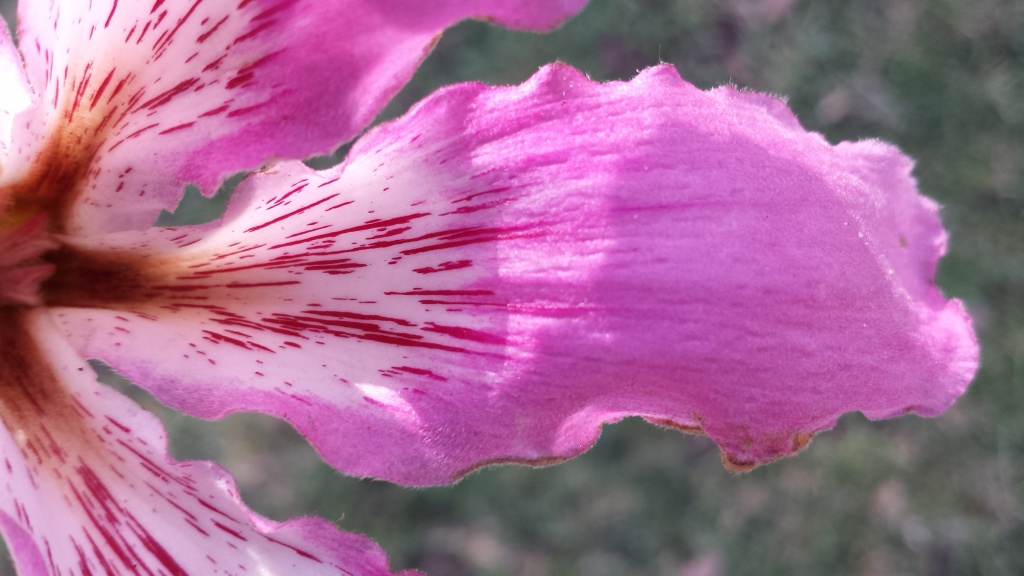
Close-up of pink silk floss petal from the Edison and Ford Winter Estates.
Who says Florida doesn’t enjoy fall colors? Our colors are just a bit different than those in the northern latitudes. If you’ve traveled through Southwest Florida lately, you’ve probably noticed a few trees covered with pink blooms. This is the display of the pink silk floss, Ceiba speciosa. In Fort Myers, there are three pink silk floss trees in bloom just south of Cortez Blvd on the west side of Cleveland Ave. Their petals are a deep pink. A silk floss tree at Alcazar Ave and McGregor Blvd in Ft. Myers has pale pink petals but hasn’t bloomed just yet. At the Edison and Ford Winter Estates, our pink silk floss and a newly-planted yellow silk floss are just starting to bloom. Both are between the Edison Guest Home and the Caloosahatchee River. We also have a “mystery” silk floss that was supposed to be pink but has an almost all white bloom with tiny pink streaks.
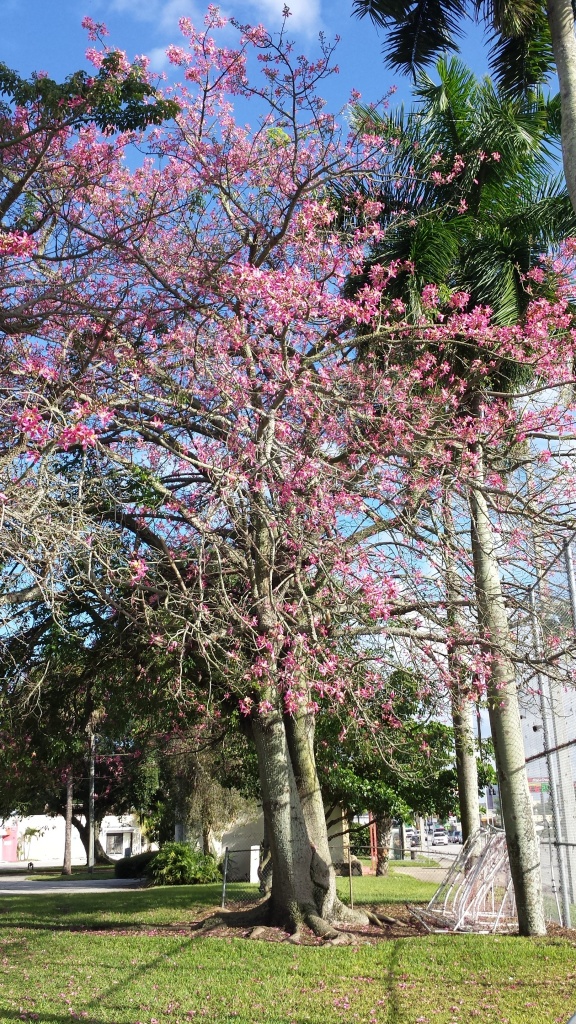
Pink silk floss tree blooming near the Downtown River District in Ft. Myers, Florida.
Like the related kapok, silk floss has numerous, sharp prickles on its trunk and branches. Silk floss typically drop their leaves in September to prepare for blooming in October. After blooming, the tree may produce seed pods that are full of a silky material that is similar to cotton in appearance. It tends to be leafless all winter until the temperatures warm a bit in the spring, when new leaves appear. If you see younger trees with green trunks, that is chlorophyll in the trunk, which allows the trees to produce energy even when leafless.
Native to South America, silk floss do very well in southern Florida but can tolerate temperatures down to 20°F. They are tolerant of south Florida’s winter droughts and one of the few flowering trees that put on a show this time of year, giving us fall color.
Stop by our Garden Shoppe, where we stock many varieties of flowering and fruiting trees (including the pink silk floss), plants, gingers, orchids, vegetables and herbs for your home.
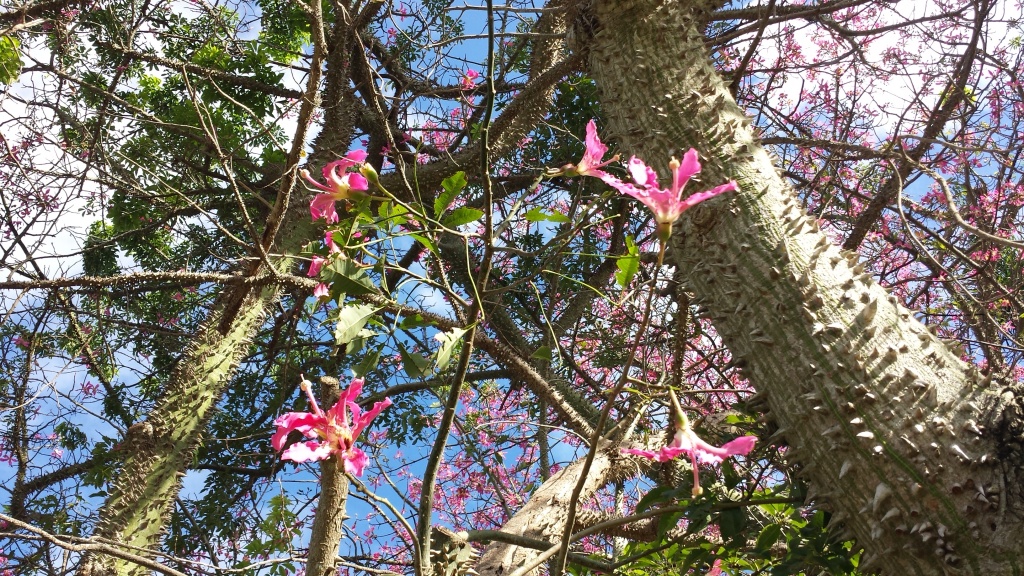
Pink silk floss, Ceiba speciosa, with flowers and characteristic branch and trunk prickles.
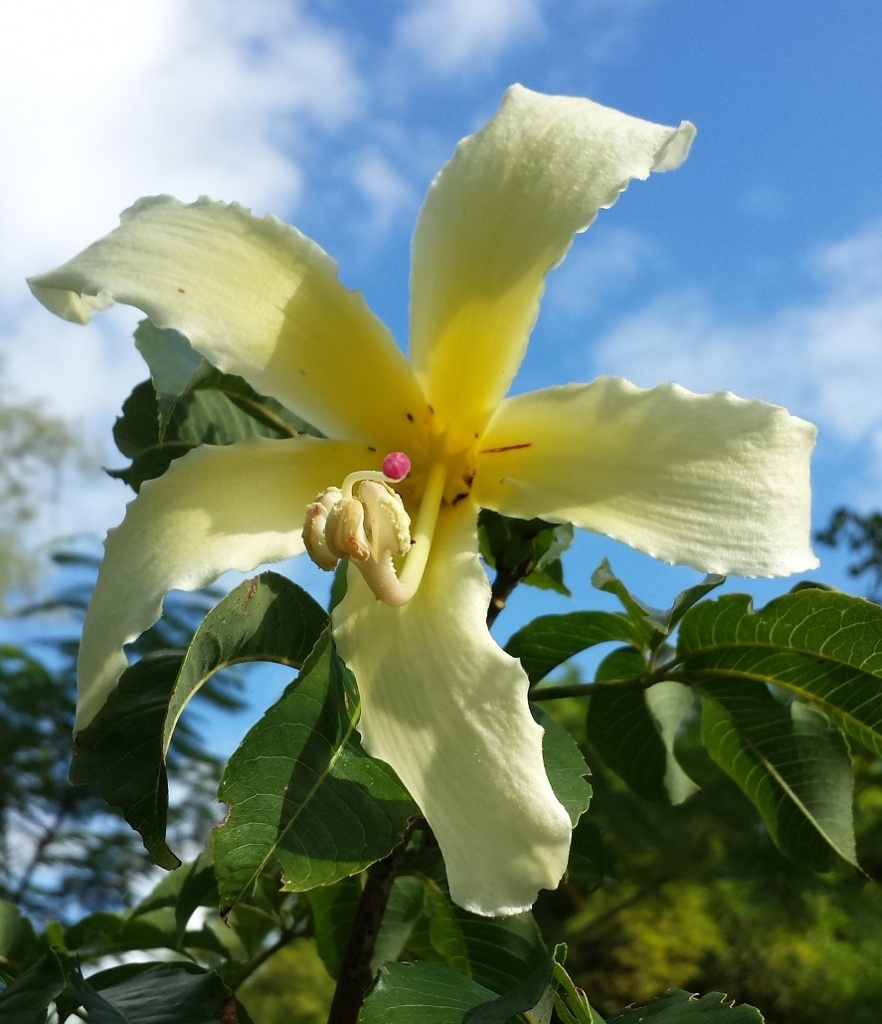
Yellow silk floss bloom between the Edison Guest Home and Caloosahatchee River at the Edison and Ford Winter Estates.
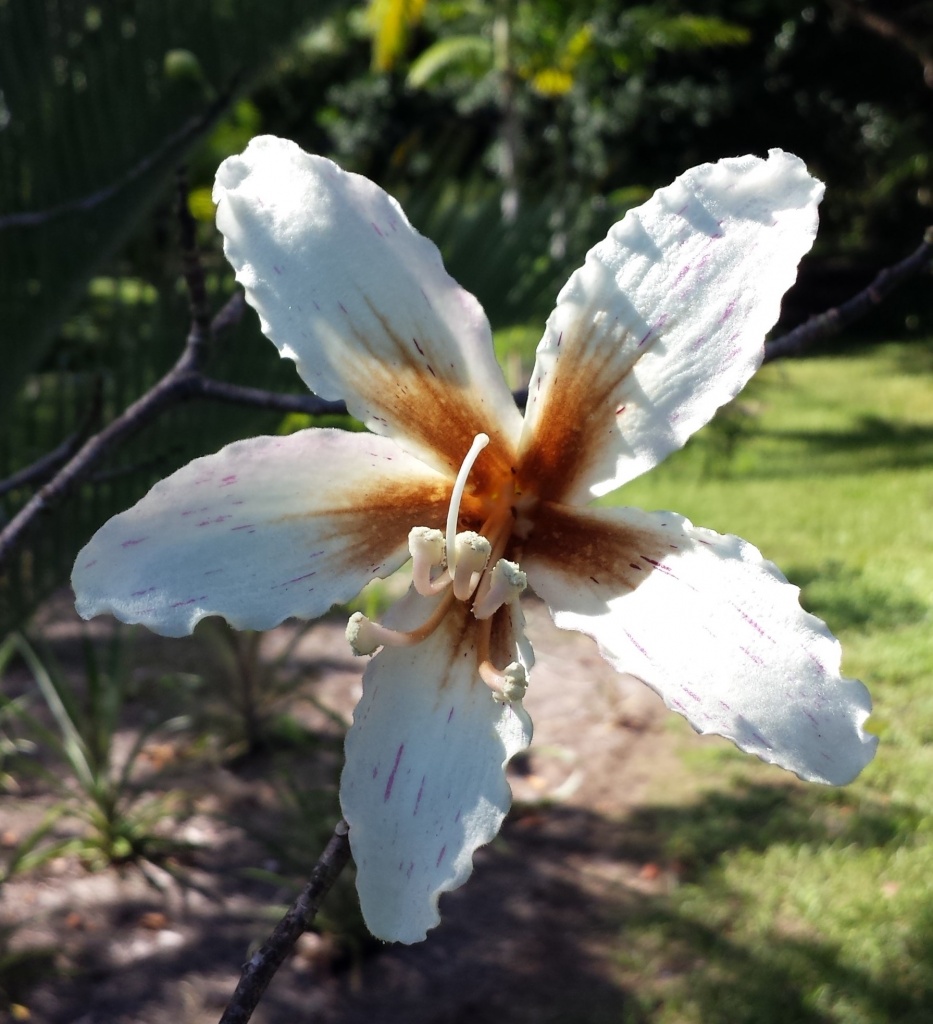
Our “mystery” pink silk floss with faint bright pink streaks on white petals.
Garden Shoppe Spotlight: Vines
Following up on our recent Garden Talk on vines, we have some new additions for sale in our Garden Shoppe.
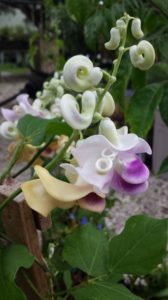
Corkscrew/Snail Vine
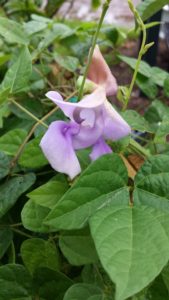
Snail Vine
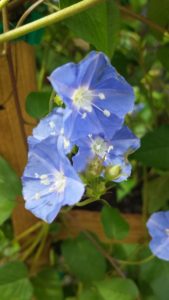
Skyblue Clustervine
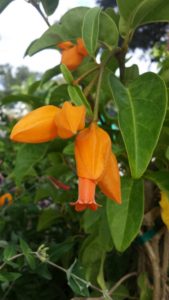
Gold Finger Plant
Corkscrew Flower: You have to smell these flowers to believe them! The corkscrew flower or snail vine, Cochliasanthus caracalla, has a very intoxicating scent and an equally interesting flower. This is a fast-growing vine that flowers in summer and late fall. It likes full sun and a moderate amount of water, so this isn’t a vine you can plant and forget about like some of our Florida native vines like coral honeysuckle. It can even bounce back after a freeze, surviving as far north as Zone 9.
Snail Vine: A similar vine, also sometimes called the snail vine, Sigmoidotropis speciosa, has purple flowers throughout most of the summer. It can thrive in sun or part sun but needs regular watering.
While both of these snail vines attract bees and butterflies, both are pollinated by ants. Each is labeled as “snail vine” in our Garden Shoppe, so look for the flower to distinguish the two.
Gold Finger Plant: If gold is more to your liking, check out the gold finger plant, Juanulloa aurantiaca. This vine is considered an aggressive grower and needs a lot of light and water. It should survive a light freeze.
Skyblue Clustervine: A reliable Florida native is the skyblue clustervine, Jacquemontia pentanthos. This twining vine requires a bit more water than most natives, but can survive short droughts. It’s blue flowers tend to bloom after rains and during the cooler winter season. It prefers full sun.
Our Garden Shoppe is open 7 days a week, 9 am – 5:30 pm.